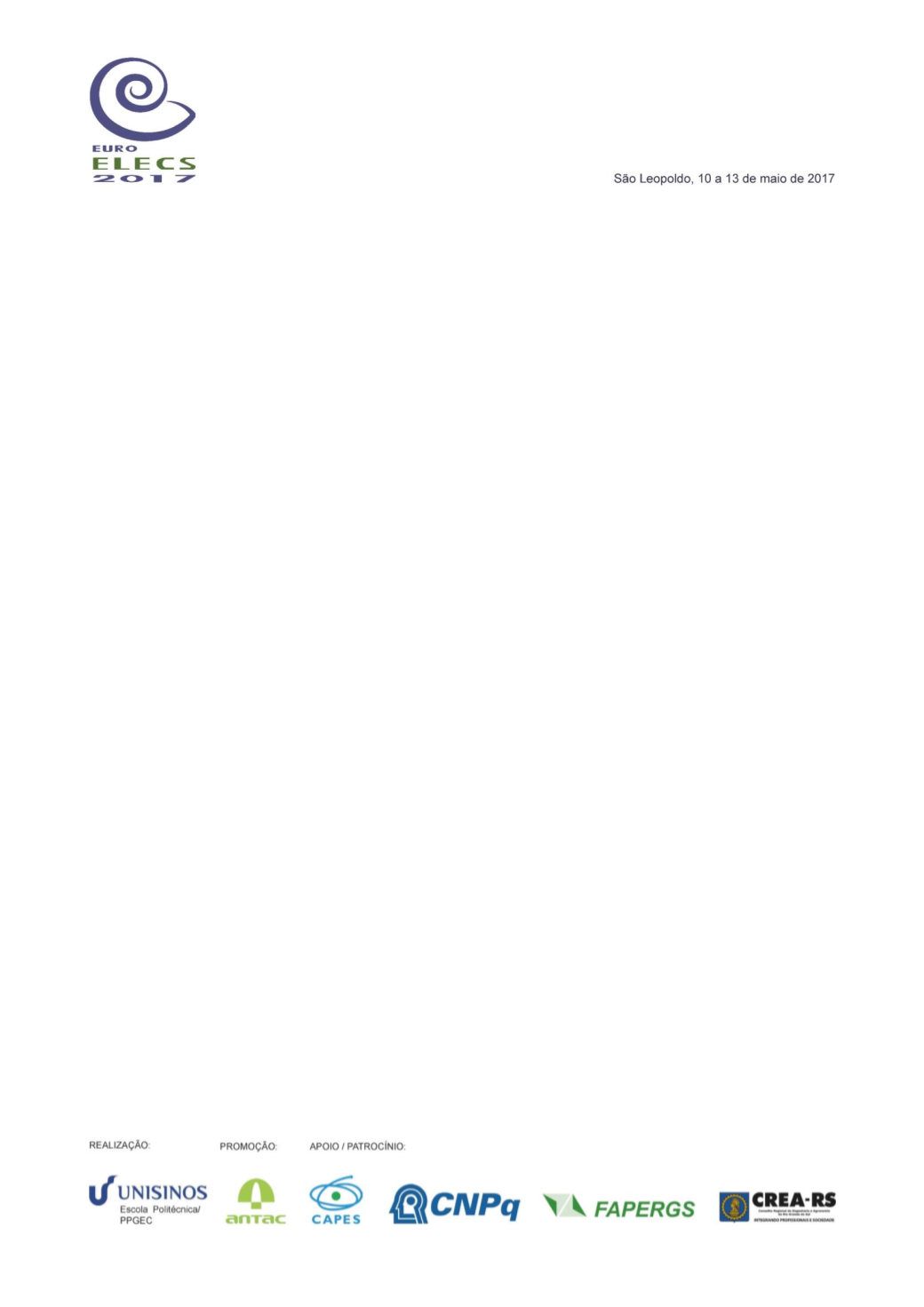

842
MANAGEMENT OF CONSTRUCTION AND DEMOLITION WASTE IN
VERTICAL WORKS IN A COASTAL CITY OF THE RIO GRANDE DO
SUL/RS
ABSTRACT
Management of Construction and Demolition Waste (CDW) in coastal cities stands out due to the
amount of CDW per capita generated annually. In these areas, the need to install an infrastructure
to meet a floating population, of about ten times greater than the resident population, is noticed. This
problem motivated the study of CDW management in one of the largest coastal cities in Rio Grande
do Sul, Brazil. Until the first semester of 2016, the city case study had 50 new vertical works. The
research evaluated a sample of 52% of these works (CDW generators) and 100% of the
environmental service providers (collection, transportation and destination of CDW). A quantitative
methodology was developed with the application of a semi-structured questionnaire, technical visits
and quantification of CDW Class A generated, collected and destined. The results showed that Class
A waste generated by this type of work represents 20% of total CDW generated in all cities. Of the
constructors working in this segment, 91% have knowledge of CONAMA Resolution No. 307 of 2002,
but only 41% of them carry out the management program. The quantitative evaluation showed a
generation of Class A CDW equal to 202.9 t/day. Considering a population of 47,148 inhabitants,
there is a per capita generation of 4.30 kg/inhab.day. Concerning the collection of CDW, this occurs
in an efficient way on the part of the transporters, but, however, the destination is not carried out in
environmentally suitable places. Data collection showed a difference between transported and
treated/destined CDW of about 25%. This difference refers to the commercialization of waste for
companies, without environmental licensing, to use as landfill. Finally, it was observed that the lack
of legislation and /or municipal standardization for the management of CDW, hinders the correct flow
of solid waste management.
Keywords:
Construction and Demolition Waste, CDW, Vertical Works, Generators, Coastal.
1. INTRODUÇÃO
O Brasil é um país com cerca de 80% da população vivendo em áreas urbanas e, junto a isto, a
produção de resíduos sólidos aumenta, pois ela é diretamente proporcional ao crescimento
populacional.
A Lei N°12.305/2010 (BRASIL, 2010), define resíduos sólidos como “Material, substância objeto ou
bem descartado resultante de atividades humanas em sociedade, a cuja destinação final se
procede, se propõe proceder ou se está obrigado a proceder, nos estados sólido ou semissólido,
bem como gases contidos em recipientes e líquidos cujas particularidades tornem inviável o seu
lançamento na rede pública de esgotos ou em corpos d’água, ou exijam para isso soluções técnicas
ou economicamente inviáveis em face da melhor tecnologia disponível.”
Os resíduos de construção e demolição (RCD) são parte dos resíduos sólidos urbanos (RSU) e
representam um grande volume destes. A construção civil é admitida como um segmento com
grande geração de impactos ambientais, consumos de recursos naturais, modificação da paisagem
e geração de resíduos sólidos (TAVARES, 2007; CAETANO
et al.
, 2016a; CAETANO
et al.
, 2016b).
A Resolução Conama 307/2002 (CONAMA, 2002) estabelece procedimentos, critérios e diretrizes,
para a gestão de resíduos da construção e demolição, de forma a disciplinar a redução a geração
de RCD. Embora, haja no país diversas legislações sobre o tema, muitas vezes os geradores
acabam não cumprindo as políticas previstas, pois devido à falta de fiscalização em muitas
localidades, acabam dispondo seus resíduos de forma imprópria. (SILVA, 2011).


















